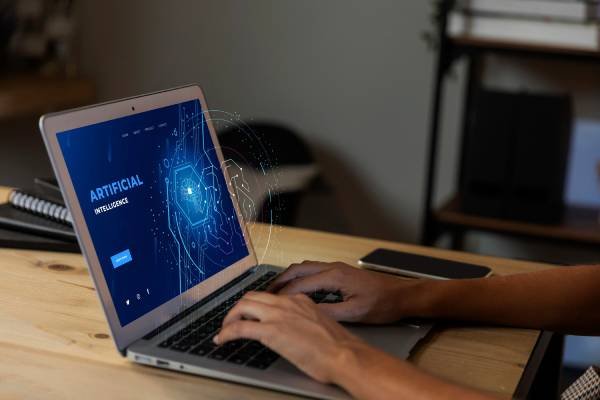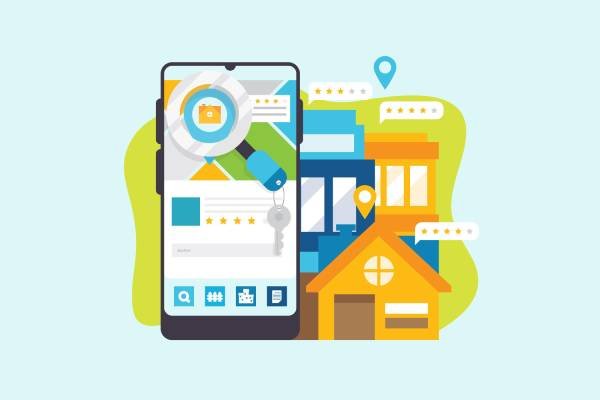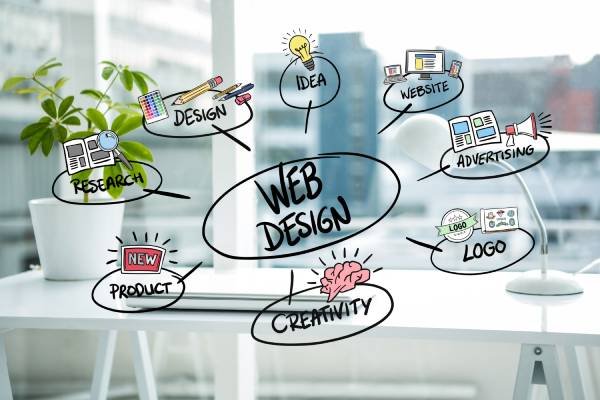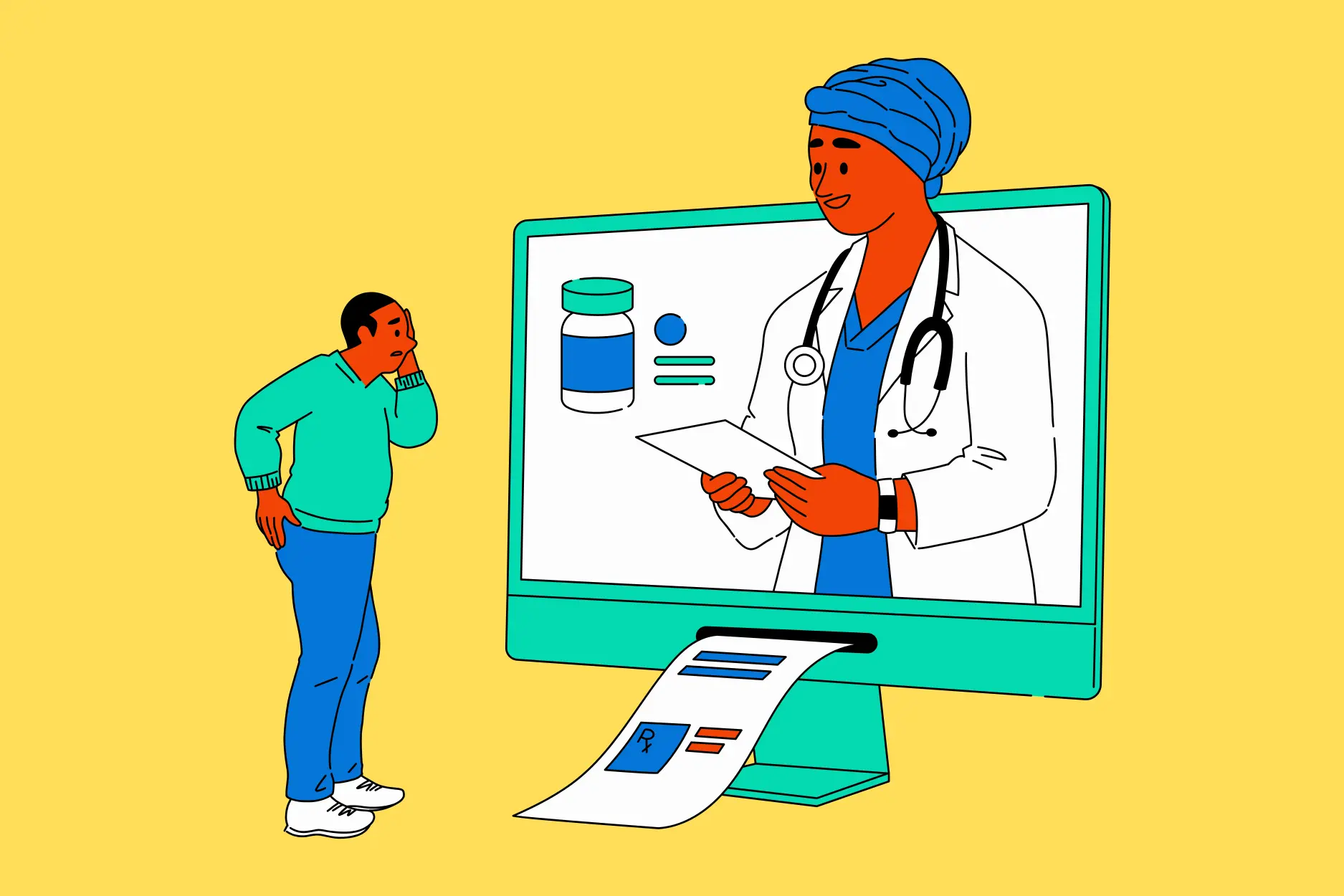Top 10 Types of Healthcare Software: Features, Benefits, and Costs healthcare software solutions
Recently, healthcare providers have really increased their use of technology in delivering quality care to patients while streamlining operations. The global IT healthcare market is projected to hit USD 870 billion in 2030, illustrating how much the healthcare industry has invested in tech. Software such as telemedicine platforms, electronic health records (EHR), and health tracking apps transformed healthcare by making it efficient and easily accessed.
After the planning stage of implementing healthcare software, it can be challenging to choose the correct type. But here is a breakdown of the top 10 types of healthcare software, along with their features, benefits, and typical development costs.
Top Ten Must-Have Healthcare Software to Improve Patient Care
Healthcare software solutions allow healthcare practitioners and patients to enjoy an automated healthcare environment. They also allow medical personnel to provide the best possible medical services, and individuals may use them to monitor their health. So, let's grasp this healthcare software using our entire medical software systems list:
Electronic Health Records (EHR) Software
EHR healthcare software is the most popular and handy tool used in healthcare. It acts like a digital, electronic version of a healthcare CRM that can help save and manage patients' full medical histories, including medication, treatments, test results, diagnoses, etc.
EHR software mainly aims to reduce the burden of manual work for healthcare providers by streamlining the management of patient data. This helps in the proper functioning of hospitals and other healthcare facilities.
Having access to a patient’s full medical history can also improve future care. For example, doctors can review past diagnoses and treatments to understand better what the patient needs and avoid complications.
There are two main sorts of EHR systems:
- Electronic Medical Records (EMR) – This system keeps everything in a digital chart, such as medications, test results, and medical history.
- Electronic Patient Records (EPR) – This system manages and organizes a complete overview of a patient’s health, helping healthcare professionals track everything.
Key Features to Look for:
- Patient status monitoring
- Automated scheduling
- Document generation
- Smart prescriptions
- Reporting and data analysis
Benefits:
Average Development Costs for EHR Software:
The cost to develop basic EHR software for a small clinic requiring essential features like patient management and billing ranges from software ranges from $50,000 to $100,000. However, depending on features like managing patient records, lab results, and integration with other systems, the price can go up to $300,000. The cost varies based on the complexity of the software, the need for integrations, and regulatory requirements.
[Also Read - Ensuring Legal and Regulatory Compliance in App Development ]
Hospital Management Healthcare Software
Hospital management software is developed in such a way that it assists in making daily activities in a hospital or clinic more efficient, from billing to scheduling appointments. It can be implemented with EHR to handle patient information along with insurance details, payments, and other data.
Its primary aim is to automate administrative work and make processes more efficient. It also offers patients a better experience throughout their treatment cycle. This software can schedule doctor appointments, patient visits, and surgeries. It also manages the pharmacy, labs, and other hospital resources.
Key Features to look for:
- Patient registration, admission, and billing
- Patient Portal and dashboards
- Management of digital imaging and diagnostics
- Emergency care modules
- Ward and bed management
Benefits:
- It helps make better medical decisions
- Keeps data secure
- Improves revenue management
- It saves time and money
- Enhances patient experience
Average Cost of Developing Hospital Management Software:
Hospital management software typically costs between $80,000 and $250,000. The price depends on the size of the hospital and the specific features and integrations needed. This software helps with managing tasks like patient admissions, bed management, inventory, staff, billing, and reporting.
Health Tracking Apps
Health tracking apps are a very broad category of healthcare software. These track various parameters of physical activity, vital signs, diet, and even mental health and wellness. Though not essentially health-care products, they are still very valuable health data generated by the user.
Wearables like the Apple Watch and Fitbit exemplify these health-tracking apps. They track things like how much you move about, how much your heart beats, and how much you sleep. Along with the famous gadgetry, wristbands, bracelets, and rings cover sicknesses such as infertility and more specialized concerns like diabetes or menstrual cycles.
Key Features to Look For:
- Personalized user experience
- Activity summaries for different periods
- Goal setting and progress tracking
- Push notifications for reminders or updates
- Community and social sharing options
Benefits:
- All-in-one health management tools
- Encourages personal accountability
- Customized goals and activities
- Ability to track multiple targets at once
- Sync across multiple devices
Average Cost of Developing Health Tracking Apps:
Creating health-tracking software can cost anything from $30,000 to $100,000 on average. Features like data visualization, user security, third-party integrations, tailored insights, tracking health data (e.g., steps, heart rate, sleep), and platform compatibility (e.g., iOS or Android) all affect the cost.
Telemedicine Healthcare Software
Telemedicine is one of the fastest-growing areas in the healthcare IT industry. By 2027, the global telehealth market is expected to reach $285.7 billion.
Although pre-pandemic, online consultations were also necessary, they have become a must now. Telemedicine software has been handy for people in remote places as well as for disabled people. It has proven to be of utmost importance to the people at times when there are restrictions on physical visitation or even when hospitals are shut down.
Telemedicine software makes it easy for doctors and patients to connect. It is helpful for asking questions, making appointments, performing treatment monitoring, and even performing rapid checkups.
Moreover, this healthcare software saves patients precious time and money as they do not have to travel to healthcare facilities. This is one reason that developing telemedicine apps has become one of the best business opportunities for healthcare companies in the present scenario.
Key Features to Look For:
- Audio and video calls
- Secure, HIPAA-compliant communication
- Remote appointment scheduling
- Management and analysis of patient data
- e-Prescriptions and integrated payment options
Benefits:
- Faster treatment with less exposure to others
- Easier access to healthcare services
- More efficient healthcare operations
- Improved patient outcomes
- Greater flexibility and potential for increased revenue
Average Cost of Developing Telemedicine Software: The cost of developing telemedicine software typically ranges from $80,000 to $200,000. This includes features like remote consultations, video appointments, secure messaging, and virtual assistants. The price depends on factors like real-time video capabilities, appointment scheduling, e-prescriptions, and integration with other healthcare systems.
e-Prescribing Healthcare Software
While it would still mean that patients have to visit a clinic to get a handwritten prescription for medication, the process has changed entirely with the advent of e-prescribing software, wherein the whole process is an online affair. The process of prescriptions given by healthcare providers can be stored in a cloud-based system and sent quickly to pharmacies using e-prescribing.
All a patient needs to do while at the clinic is present themselves and give the doctors the opportunity to easily select and order the preferred drugs by clicking a few buttons on the system, which accesses the most commonly prescribed drugs.
The chosen prescription is transmitted safely to the patient's preferred drugstore. Using the portal offered by the electronic prescribing software, the patient can alter their preferred drugstore at any time.
Since this is health software, it is convenient for the patient to make adjustments either at the clinic or later. Once the drugstore has obtained the prescription, it will immediately start processing it.
Key Features to Look For:
- Electronic Prior Approval (e-PA)
- Medication decision support
- Formulary checking
- Automated adverse drug interaction alerts
- Patient information and data management
Benefits to Consider:
- Complete patient medication records
- Fewer clerical and prescription errors
- Easy tracking of prescription fulfillment
- Compliance with meaningful use requirements
Average Cost of e-Prescribing Software Development: The cost to develop e-Prescribing software typically ranges from $50,000 to $150,000. The cost can vary depending on features such as drug database integration, allergy alerts, and regulatory compliance.
[Also Read - Protect Your Business from Cybersecurity Threats: Essential Steps to Secure Your App ]
Remote Patient Monitoring Software (RPM)
This application is referred to as Remote Patient Monitoring (RPM). It involves using technology to track health data about a patient from afar. It allows healthcare providers to monitor patients even when they are not in the clinician's office. These medical devices collect health information and send it to doctors, who can then analyze it further and make recommendations if necessary.
Therefore, doctors can observe how their patients perform between visits or even at times when a face-to-face visit is not possible. Close to 90% of the hospitals will adopt AI-based RPM tools by 2025.
These newly developed healthcare software tools are actually changing the future face of healthcare. Such tools enable doctors to keep track of patients almost in real-time, gather vital health data, and make informed decisions to improve patient care, especially in chronically ill patients. All ongoing needs, such as heart disease, asthma, diabetes, hypertension, or mental health disorders, can be monitored continuously.
RPM also features wearables, such as smartwatches, ECG monitors, blood pressure tracking meters, glucose meters, and sensors that track oxygen levels. These appliances help track health data over time.
Key Features to Look For
- Real-time health tracking
- Data analytics and reporting
- Integration with IoT devices
- Online communication with patients
- Patient data security
Benefits of RPM
- Reliable and accurate health data
- Automated health monitoring
- Strong security to protect data
- Accessible anywhere, anytime
- Improved patient engagement
Average Costs of RPM Software Development
On average, developing RPM software can cost between $80,000 and $280,000. The cost depends on factors like device integration, data analytics, and security features. RPM software collects and analyzes data from remote monitoring devices to track patient health and alert doctors to any critical changes.
Medical diagnosis Healthcare software
Medical diagnosis software is a tool used in healthcare to help doctors quickly and accurately diagnose health conditions. This software uses advanced technologies like AI (artificial intelligence) and machine learning to analyze large amounts of patient data and provide precise diagnoses. This healthcare software can help improve patient care and lower healthcare organizations' costs.
These tools assist doctors in making decisions and help reduce diagnostic errors. Medical diagnosis software's main function is to analyze clinical data, such as health reports and test results, to deliver a diagnosis.
This can also help identify patients who are at a higher risk of certain diseases, allowing doctors to start treatment earlier.
One example of medical diagnosis software includes chatbots and questionnaires that act as symptom checkers.
Key Features:
- Ability to share information with other medical systems (interoperability)
- Computerized order entry for doctors
- Alerts for possible drug interactions
- Electronic approval for certain medical procedures
- Recognizing patterns and comparing data
Benefits:
- Predictive medical analysis
- Faster and more accurate medical imaging
- Personalized treatment plans
- Support for medical research and trials
- Aid in drug development and production
Average Costs of Developing Medical Diagnosis Software: The average cost of developing medical diagnosis software is between $150,000 and $450,000, depending on its complexity, accuracy, and regulatory standards. This software is often used to help healthcare professionals interpret medical images (like X-rays and MRIs) and lab results.
[Also Read - 25 Critical Mobile App Metrics That Will Boost Your App’s Performance ]
Healthcare Billing Software
Healthcare billing software simplifies and automates the payment and invoicing process, reducing the time and resources needed to handle these tasks. Since the software handles billing and claim processes automatically, it also minimizes errors and the risk of reputational damage. With fewer people required to complete these tasks, it can also save money.
The program may also be coupled with accounting systems to provide a seamless experience while keeping all financial data in sync. This connection enables healthcare providers to boost reimbursement rates, generate more money, and preserve financial stability.
While basic medical billing software tracks claims and payments, modern systems offer much more functionality.
The healthcare billing industry is predicted to increase from USD 15.88 billion in 2023 to USD 32.79 billion by 2032 at a compound annual growth rate (CAGR) of 12.14%.
Key Features to Look For:
- Claim processing
- Electronic superbills
- Eligibility verification
- Payment reminders
- Electronic remittance
Benefits:
- Less paperwork and fewer errors
- More efficient claim tracking
- Improved financial reporting
- Faster cash flow
- Better patient experience
Average Costs of developing healthcare billing software: The cost of developing healthcare billing software ranges from $80,000 to $250,000, covering features like billing workflows, claim submissions, payment processing, and ensuring compliance with healthcare regulations.
Personal Health Record (PHR) Software
This healthcare app helps organize and store the medical histories of all family members. It's a great tool for patients to easily access their health information and documents in a clear, user-friendly way. PHR software is a key part of the larger healthcare system and helps improve patient monitoring by making information readily available.
With features like push alerts and data analysis, the app can keep users up to date on their health or remind them of forthcoming responsibilities. By storing personal health information, the app may also function as a wellness program, encouraging people to monitor their medical issues and live better lives.
PHR software may accomplish various tasks, such as organizing medical papers, creating individualized wellness goals, and warning doctors in an emergency.
Key Features to look for:
- Cloud and mobile access
- Data sorting and organization
- Store clinical and patient data
- Summarization tools
- Custom telemedicine and telehealth options
Benefits:
- Easy access to patient information
- More engagement from patients
- Lower administrative costs
- Better communication between patients and caregivers
- Easy management of family health records
Average Development Costs of Personal Health Record (PHR) Software: The cost of developing PHR software typically ranges from $30,000 to $100,000. This includes ensuring data privacy, designing a user-friendly interface, and integrating with wearable health devices.
PHR software lets individuals manage important health details, like medical history, medications, allergies, and appointments.
Medical Image Analysis Healthcare Software
Medical image analysis software is a type of healthcare tool that helps doctors and healthcare professionals analyze images from medical tests. It can assist with diagnosing conditions, tracking disease progression over time by comparing images, and predicting patient outcomes.
As imaging technology advances, so does software's capacity to interpret pictures. The objective is to develop software that can automatically detect problems in medical pictures such as CT scans, MRIs, echocardiograms, and thermography scans.
This healthcare software uses deep learning techniques to examine images. It can handle large amounts of data, sorting through hundreds of images at once. It can also be trained to highlight images with unusual findings, making it easier for radiologists to focus only on the important ones rather than reviewing every single image.
Key Features to look for:
- Image registration and segmentation (organizing and dividing images for better analysis)
- Improving image quality
- Viewing images in 2D
- Creating 3D visualizations from images
- Evaluating image quality
Benefits:
- Automates the image analysis process
- Helps manage the increasing volume of medical images
- Scalable and efficient for large operations
- Secure storage of patient images
- Non-invasive methods to examine the body's internal structures
Average Development Costs of Medical Image Analysis Software:
Creating medical image analysis software typically costs between $150,000 and $450,000. This includes the software's ability to process and analyze images, integrate artificial intelligence, and meet necessary regulatory standards.
The Overall Cost of Developing Healthcare Software
Several important factors must be considered when discussing the cost of developing healthcare software. These variables include the software's size, usefulness, complexity, and the technology employed. The typical cost is between $50,000 and $100,000 or more, depending on the sort of software you want to create.
If you need help developing healthcare software, partner with a trusted development company like IPH Technologies. They can guide you through the process and offer cost-effective solutions that are suited to your needs. Another option is to hire software developers who can work with you to build the software within your budget and timeline, ensuring that you get the right solution without overspending.
Choosing the right healthcare app development partner or team is crucial to keeping costs manageable while ensuring the software meets your requirements and works efficiently.
| Phase | Cost Range (USD) |
|---|---|
| Planning and Design | $3,000 - $6,000 |
| Development | $15,000 - $80,000 |
| Testing and Quality Assurance (QA) | $6,000 - $9,000 |
| Deployment | $4,000 - $7,000 |
| Security and Compliance | $7,000 - $10,000 |
| Maintenance and Support | $5,000 - $8,000 |
| Marketing and Launch | $15,000 - $20,000 |
What are the top types of healthcare software solutions?
The top types of healthcare software include Electronic Health Records (EHR), telemedicine software, health tracking apps, hospital management software, e-prescribing software, remote patient monitoring (RPM) software, medical billing software, and medical image analysis tools.
Conclusion
With both professionals and patients adopting digital health solutions and governments realizing the potential of these applications, we may expect even more inventive innovations to emerge.
Custom Healthcare software solutions are becoming increasingly important to medical service providers. Even tiny clinics increasingly need technologies like CRM systems and EHR software to provide competitive service. That is why we focus on offering high-quality healthcare software development services.
Our professionals provide extensive knowledge and a tailored approach to each job. If you are interested, get in touch with us, and we will work with you to develop the best medical software solution to enhance your healthcare offerings.
Frequently Asked Questions

Read more blogs

Time and Cost of Developing an AI like ChatGPT: Key Factors Explored
Explore the factors influencing the time and cost of developing an AI model like ChatGPT. Understand key considerations for successful AI ap

Guide to Successful Real Estate App Development: Features, Technologies, and More
Explore the advantages of developing a real estate app, key features, technologies to employ, and the importance of collaborating with a Rea

Custom vs. Template-Based Website Development: A Comprehensive Cost Comparison Guide
Explore the costs, pros, and cons of custom website development vs. template-based solutions. Make an informed decision for your online pres
